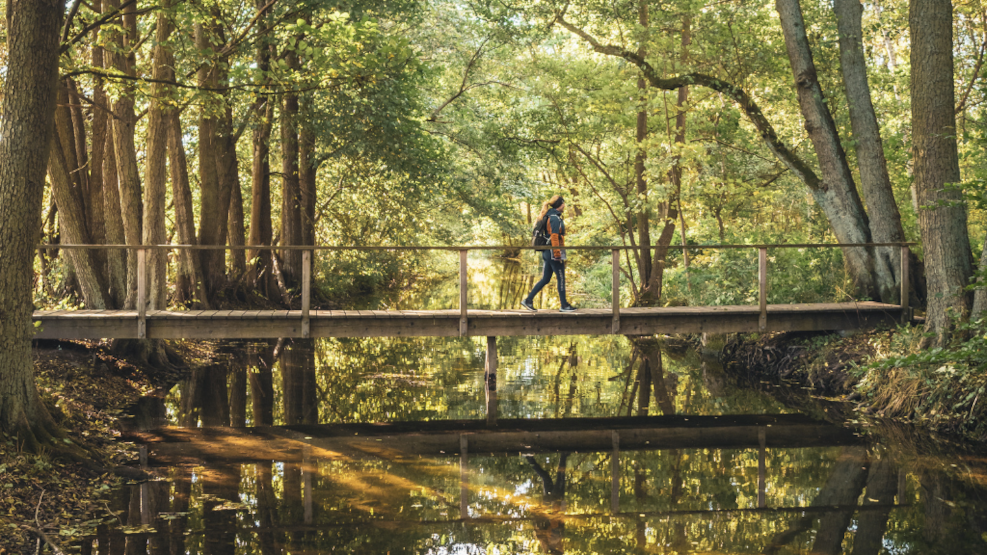
Walk in the footsteps of the monks on the hiking route around Esrum Monastery.
On the hiking route around Esrum Monastery, you walk in the footsteps of the monks. Explore the area and its significance for the monks of the powerful medieval monastery. The tour is four kilometres long and features three themed trails.
Walk in the Footsteps of the Monks
Travel back to the 13th century – back to medieval Denmark, where religion permeates every part of society, and priests and bishops are almost as powerful as the king.
In the 13th century, Esrum Monastery was the centre of the Cistercian order and the mother monastery for Scandinavia and Northern Germany. Experience what life was like at the powerful Esrum Monastery as you follow the hiking route.
A Four-Kilometre Walk Around Esrum Monastery
The hiking route is four kilometres long and winds through the terrain around Esrum Monastery. It is suitable for both children and adults – bring the family along for a walk or enjoy the route alone in peace and contemplation.
Follow the route by looking for signs with green arrows inside a white circle.
Visit Esrum Monastery and Møllegård with a Playground, Events, and Exhibitions
Follow One of the Three Themed Trails
The hiking route includes three themed trails, each with its own focus. Each trail has five points of interest where you can read about its significance for Esrum Monastery. The three themes are:
The Animal Trail (Green Markers)
- Stoat
- Great Spotted Woodpecker
- Butterflies and Insects
- Red-backed Shrike
- Goldeneye
The Water Trail (Blue Markers)
- Esrum Watermill
- Daniel’s Spring
- The Meadows by Esrum Lake
- Esrum Timber Channel
- The Monks’ Watermill
The Monastery Trail (Brown Markers)
- Esrum Monastery
- The Fertile Soil of Esrum
- The Monks’ Lake
- The Monastery Wall
- The Brick Kiln
Remember to Respect Nature
- Take care of the wildlife – keep dogs on a lead
- Be considerate of other hikers
- Stay on authorised paths and marked trails
A Collaboration with the Royal North Zealand National Park
The hiking route was developed in collaboration with Esrum Monastery and the Royal North Zealand National Park. It is Denmark’s second-largest national park and includes, among other things, Denmark’s largest lakes and several UNESCO-certified areas.